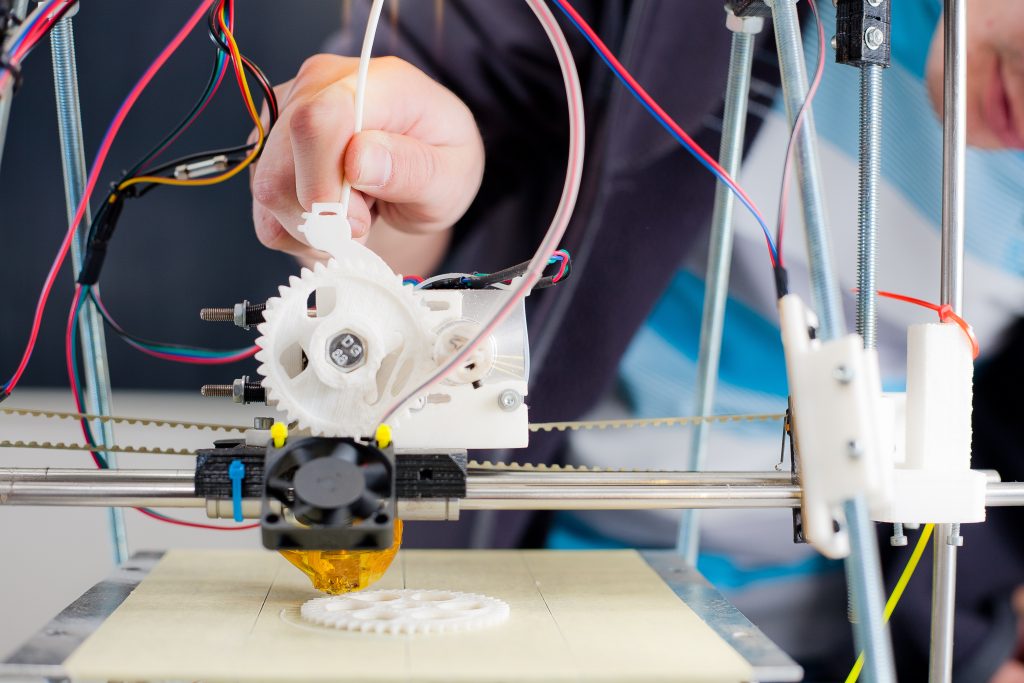VA Takes Advantage of 3D Printing to Help Veterans
Bob Crouch is headed into his 16th occupational therapy appointment at the American Lake branch of the VA Puget Sound Health Care System.
Crouch’s thumb was amputated after a household accident, and he lost the use of his fingers during one of three surgeries.
Mary Matthews-Brownell is helping him stretch and exercise his hand to unclench his fingers. But their main goal is to get the Vietnam veteran gaming again.
“It’s whatever they’re passionate about. That’s what occupational therapy is all about,” said Matthews-Brownell. “Whatever it is they want to do, I want to help them do it.”
Without his whole thumb, Crouch can’t maneuver gaming controls. He knows it might sound silly to some people, but he loves his PlayStation 3.
“I finally saved all my pennies, nickles and dimes,” he said. “I managed to find one that I could afford that was in a pawn shop.”
A few months after buying it in 2015, he lost his thumb.
“Anyone who plays video games knows, it’s all about the thumbs,” said Dr. Beth Ripley of the VA. “You’ve gotta have thumbs.”
So the VA offered to print him a new one. In the VA’s Innovations Lab, doctors and engineers move 3D printing from the research bench to the bedside.
“We have a very clear mission at the VA and that is to serve veterans, period,” Ripley said. “So if it can help a veteran and we can show the cause and the case it will help the veteran, we have license to do it.”
One of the lab’s top projects is to develop same-day custom orthotics to protect the feet of diabetics.
Eventually, doctors will be able to scan a patient’s foot and feed specific measurements into the 3D printer, which will then build the unique orthotic, adding one thin layer at a time.
“It allows you to create objects and shapes that normally you can’t make. It also allows you to create very customized things at a fraction of the cost,” Ripley said.
They are also using 3D printing to help plan surgeries. By printing a model of an organ or body part that is identical to a patient, surgeons go into the operating room knowing exactly what they’re going to see.
“You save that patient two hours under anesthesia, which means a better outcome. You might have saved them blood loss,” Ripley said. “You save the fatigue on your surgeon.”
It also saves money by cutting out OR time.
They wanted to use the same 3D tech to build an attachment that would fit perfectly onto Crouch’s hand, doing the job of his thumb.
They enlisted the engineers of tomorrow: high schoolers and college students in a national competition.
Without ever seeing Crouch in person, the students competing at 2018 SkillsUSA Additive Manufacturing used a digital file to know the shape and size of Bob’s hand, then they designed and printed around a hundred possible devices with various knobs and extensions to make gaming easier.
Crouch was emotional just thinking about their hard work.
“They don’t even know me. I’m just an old vet that’s been trying to keep himself occupied and have some fun and everything, and they’re trying to help me,” he said.
And they’re using technology Crouch couldn’t have imagined when he served in Vietnam 45 years ago.
“I just kinda think it’s maybe another way for someone to say, thanks you old vet for doing what you did, you know?” Crouch said.
A couple years ago, Seattle was one of just three VA hospitals with a 3D engineering lab. Now there are 20, with plans to create more. From an occupational therapist point of view, Matthews-Brownell says it’s the future.
“I find it to be a game changer in technology,” she said. When she went through her training, “we had wood shop and sewing machines. I think 3D printers will be the new wood shop.”

